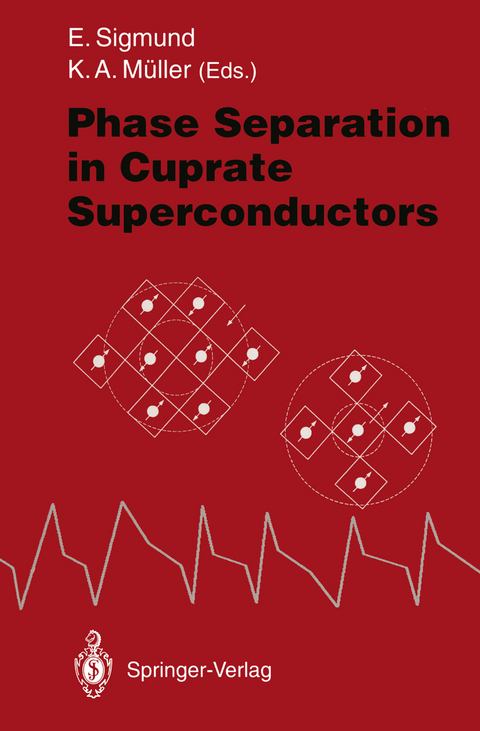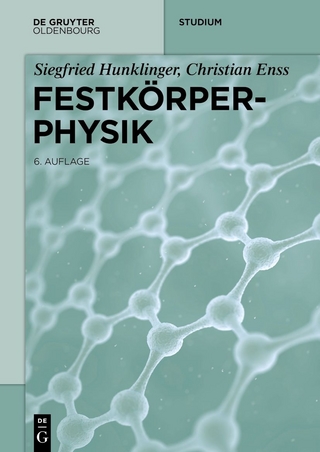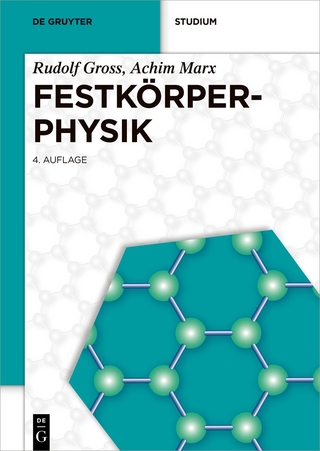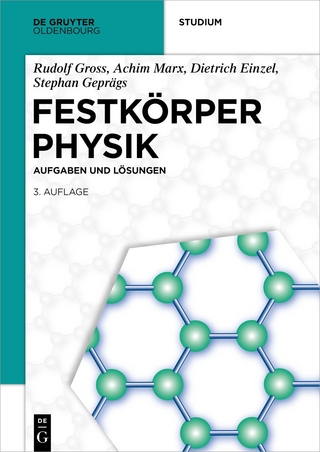
Phase Separation in Cuprate Superconductors
Springer Berlin (Verlag)
978-3-642-78807-9 (ISBN)
I General Properties.- Recipe for High-Tc Transition-Metal Chalcogenide Superconductors.- Phase Separation as a Possible Scenario for High Tc Superconductors: A Particular Overview.- Point Contact Spectroscopy in the High Tc Oxides.- Cuprate Superconductors: Universal Properties and Trends; Evidence for Bose-Einstein Condensation.- II Electronic Results I.- Polar on Formation and Percolative Phase Separation in HTSC.- On the Role of Electronic and Chemical Phase Separation: Susceptibility and Conductivity Experiments on La2?xCuO4+?.- The Phase Diagrams and Doped-Hole Segregation in La2CuO4+? and La2?xSrxCuO4+? (x ? 0.15, ? ? 0.12).- Neutron Spectroscopy in RBa2Cu3Ox (R=Rare Barth, 6?x?7) Compounds: Charge Transfer, Phase Separation, Spin Fluctuations.- III Electronic Results II.- Phase Separation in Cuprate Superconductors: Magnetic Resonance Studies.- Paramagnetic Resonance Studies of Phase Separation in Cuprate Superconductors.- Fermi Glass State in Partially Doped Insulating Cuprates.- Two-Magnon Raman Scattering in Doped YBa2Cu3Ox with Respect to Confined Hole Clusters.- IV NMR and Mössbauer Studies.- Electron Hole Ordering in La2CuO4+?.- Microscopic Study of Local Structure and Charge Distribution in Metallic La2CuO4+?.- Mössbauer Probe Measurements in La2?xSrxCuO4 and YBa2Cu3Ox.- V Structural Phase Separation.- Indications for a Phase Separation in YBa2Cu3O7?x.- Superconductivity Versus Oxygen Concentration in 123 Compounds: Influence of RE Ionic Radii Studied by Cu NQR.- The Role of the Additional Oxygen Atoms on the Superconducting Properties of La2CuO4-Related Compounds.- Structural Disorder and Phase Separation in TmBaCuO as Seen from Tm NMR.- VI Electron-Phonon Interaction I.- The Coupling of a Wigner Polaronic Charge Density Wave witha Fermi Liquid Arising from the Instability of a Wigner Polaron Crystal: A Possible Pairing Mechanism in High Tc Superconductors.- Pairing Interaction and Phonon Renormalization Favored by Phase Separation.- Electronic Excitations in Undoped and Lightly Oxygen Doped La2CuO4+y.- VII Electron-Phonon Interaction II.- Electronic Structure and High Tc Superconductivity in the Cuprates.- Apex Oxygen Anharmonicity and Low Energy Electronic Transitions Observed in 1-2-3 by IR-Excited Raman Spectroscopy.- Photoexcited Electons and Holes in YBa2Cu3O7??: A Study by Picosecond Raman Scattering.- Anharmonic Effects Related to the Apical Oxygen Vibration in YBa2Cu3O7 by LAPW Calculations.- VIII Further Theoretical Concepts.- Thermodynamics of the Emery Model.- The Effect of Coulomb Interactions on Phase Separation.- Options for the Effective Electron-Electron-Interaction from Unitary Transformations.
| Erscheint lt. Verlag | 23.8.2014 |
|---|---|
| Zusatzinfo | XVII, 401 p. 19 illus. |
| Verlagsort | Berlin |
| Sprache | englisch |
| Maße | 155 x 235 mm |
| Gewicht | 638 g |
| Themenwelt | Naturwissenschaften ► Physik / Astronomie ► Festkörperphysik |
| Technik ► Elektrotechnik / Energietechnik | |
| Technik ► Maschinenbau | |
| Schlagworte | band structure • Crystal • Cuprate superconductors • Diffusion • electron • Experiment • Mössbauer spectroscopy • neutron diffraction • Phase • scattering • Segregation • Superconductivity • Superconductor • Thin Films |
| ISBN-10 | 3-642-78807-6 / 3642788076 |
| ISBN-13 | 978-3-642-78807-9 / 9783642788079 |
| Zustand | Neuware |
| Haben Sie eine Frage zum Produkt? |
aus dem Bereich


